ORAEC and Prosopographia Aegypti
Personal names are an important area of research in Egyptology. We have mentioned many resources in previous blog entries: the standard work by Ranke, the current work on the onomastics of the Old Kingdom, a database on the names of the Old Kingdom, and a database on the names of the Middle Kingdom. Today we are talking about the digital service Prosopographia Aegypti, which is supervised by Professor Graefe. This is a database with more than 60,000 entries containing occurrences of personal names. An entry may contain the following information: transliteration, hieroglyphs in MdC, hieroglyphs as image file, dating of the occurrence, bibliographical reference, references to Ranke, PNM and TLA, comments. Here are some images for illustration:
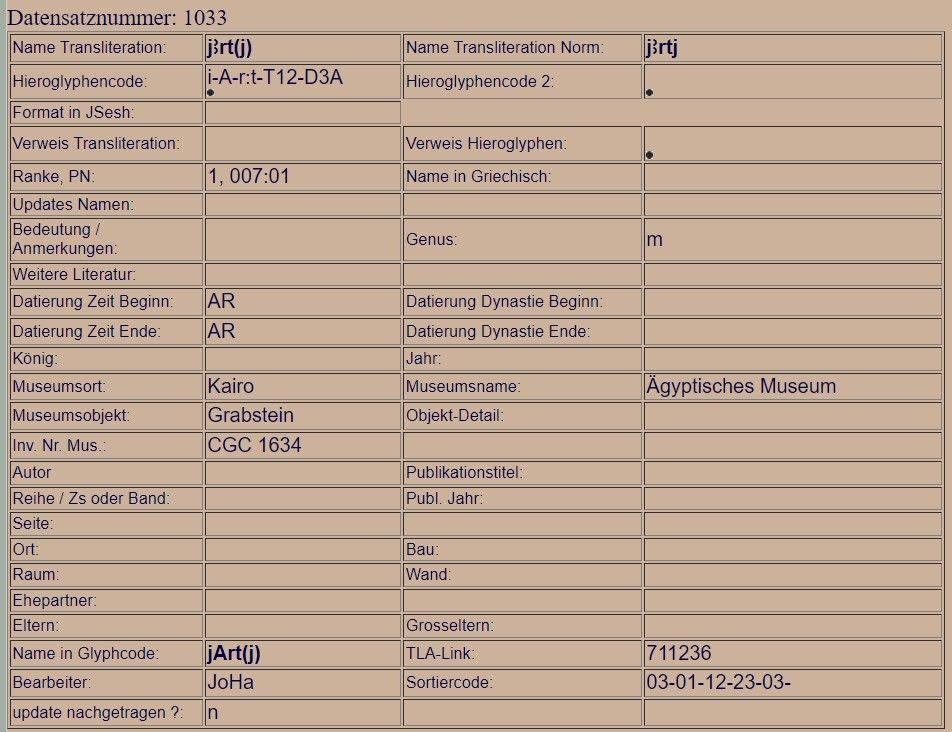
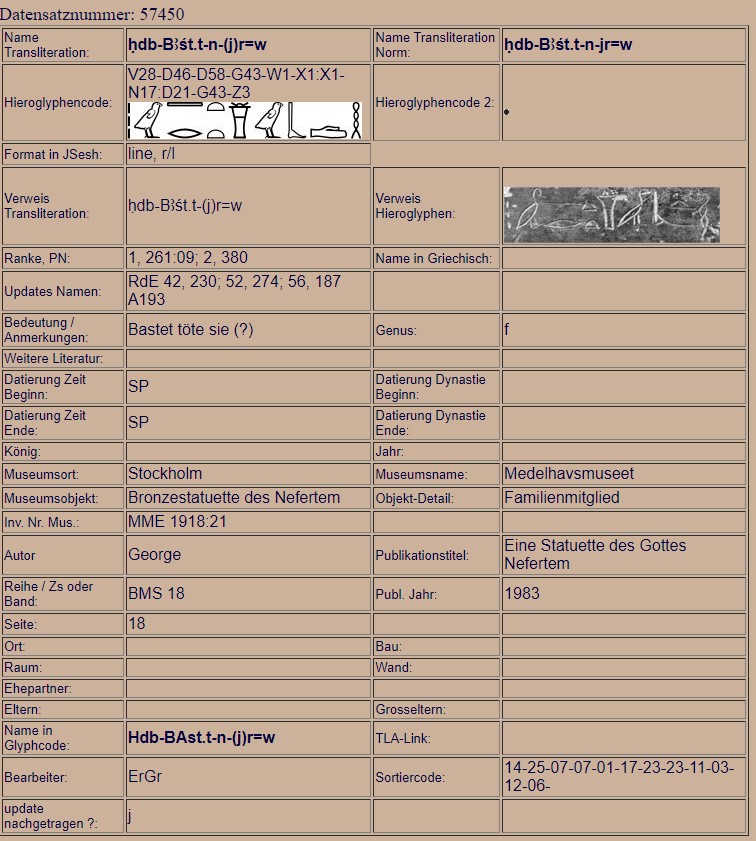
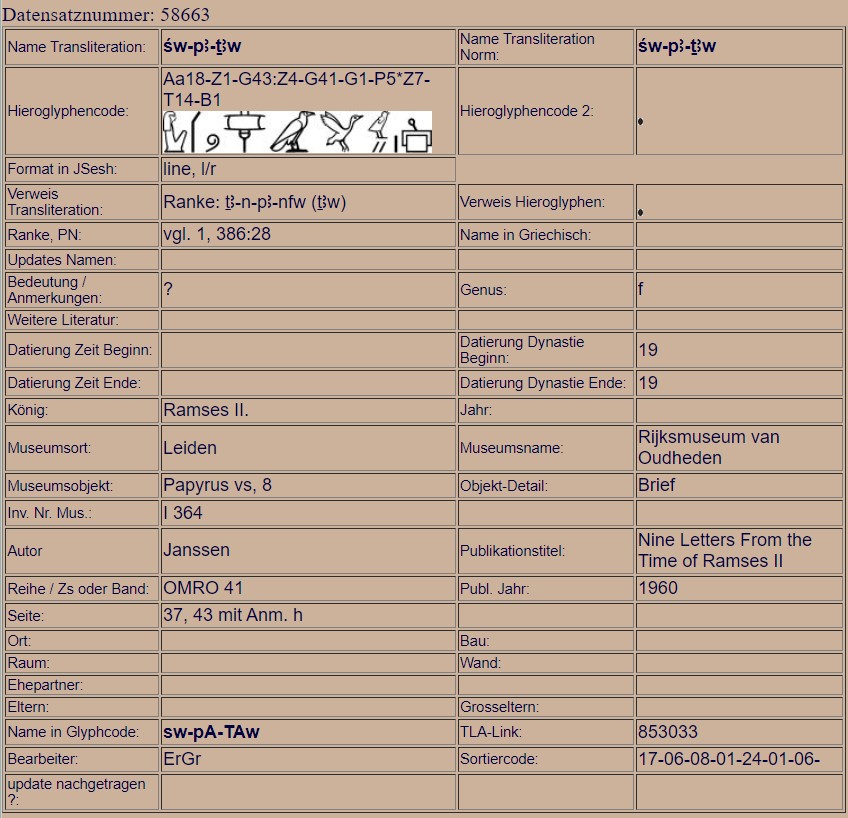
There are also several search forms for this wealth of information:
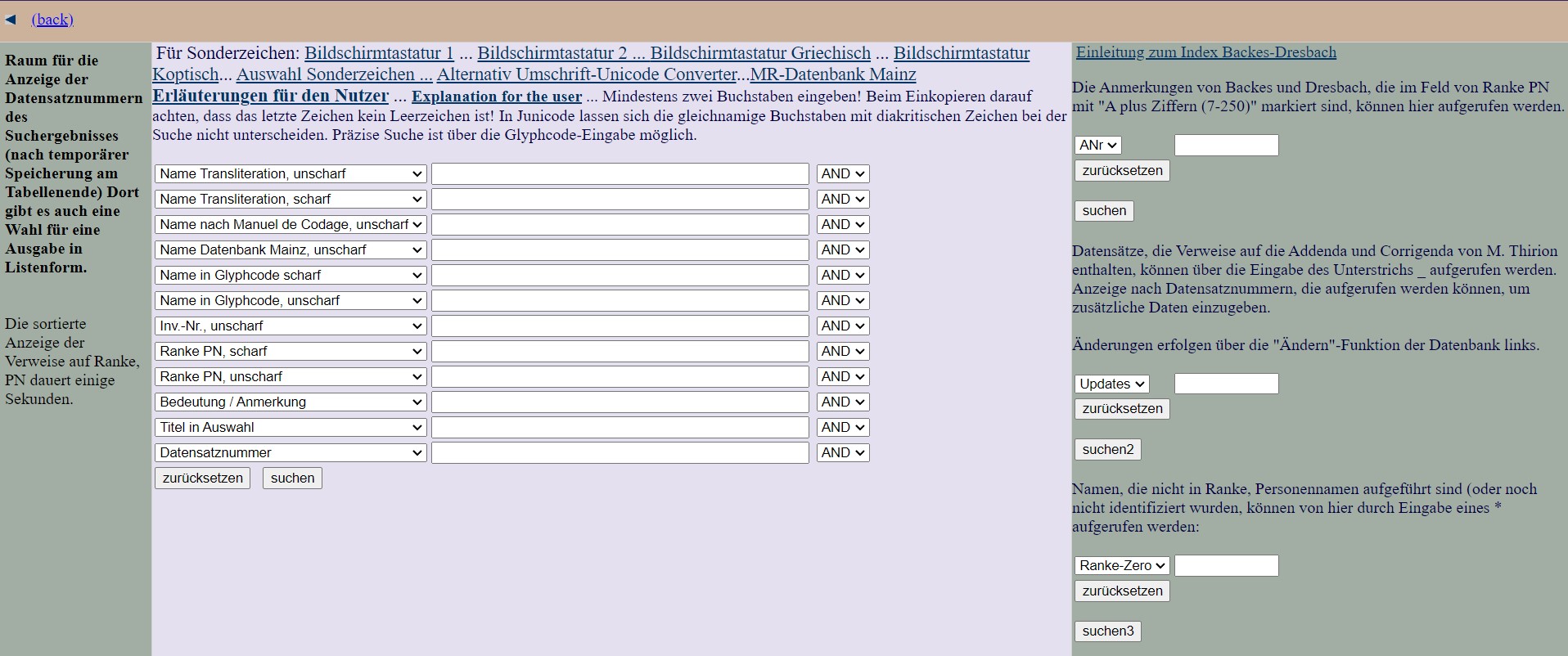
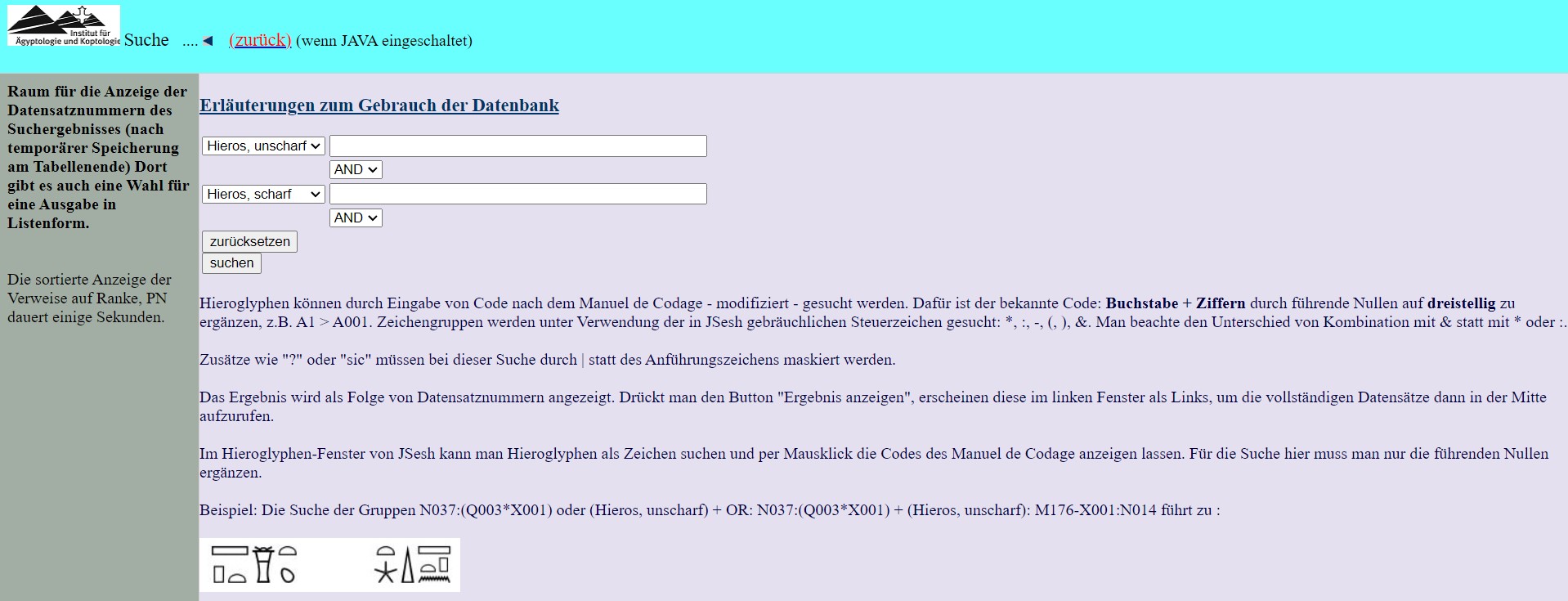
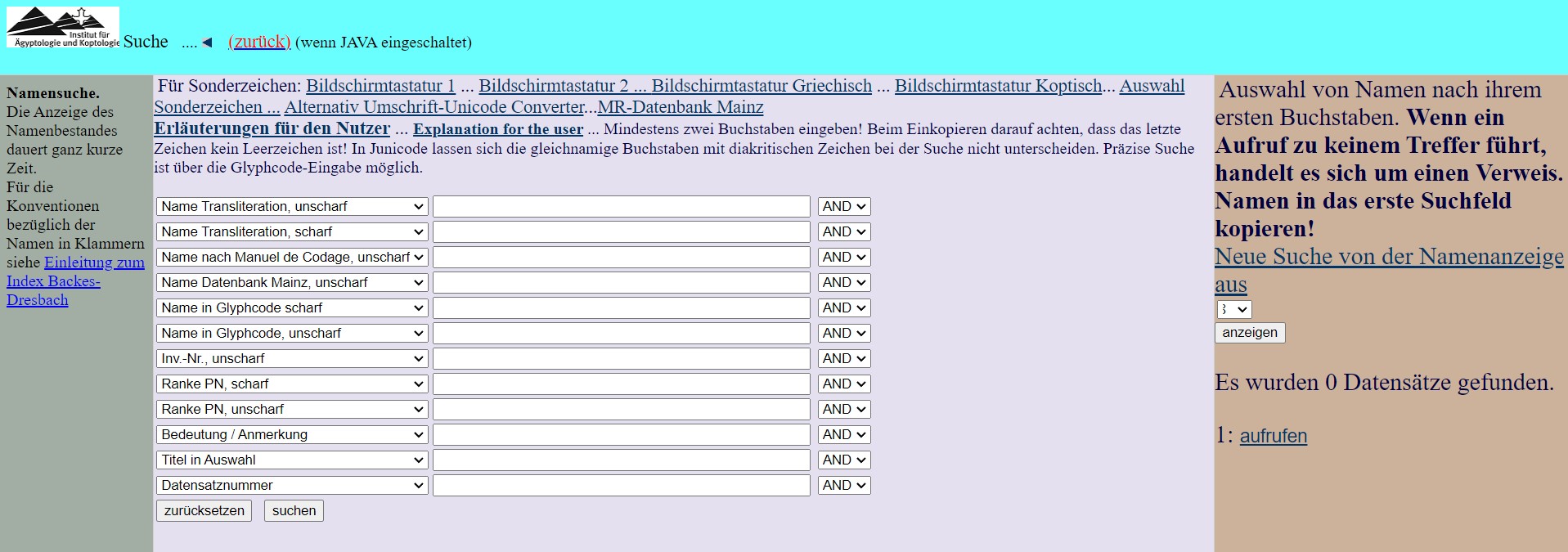
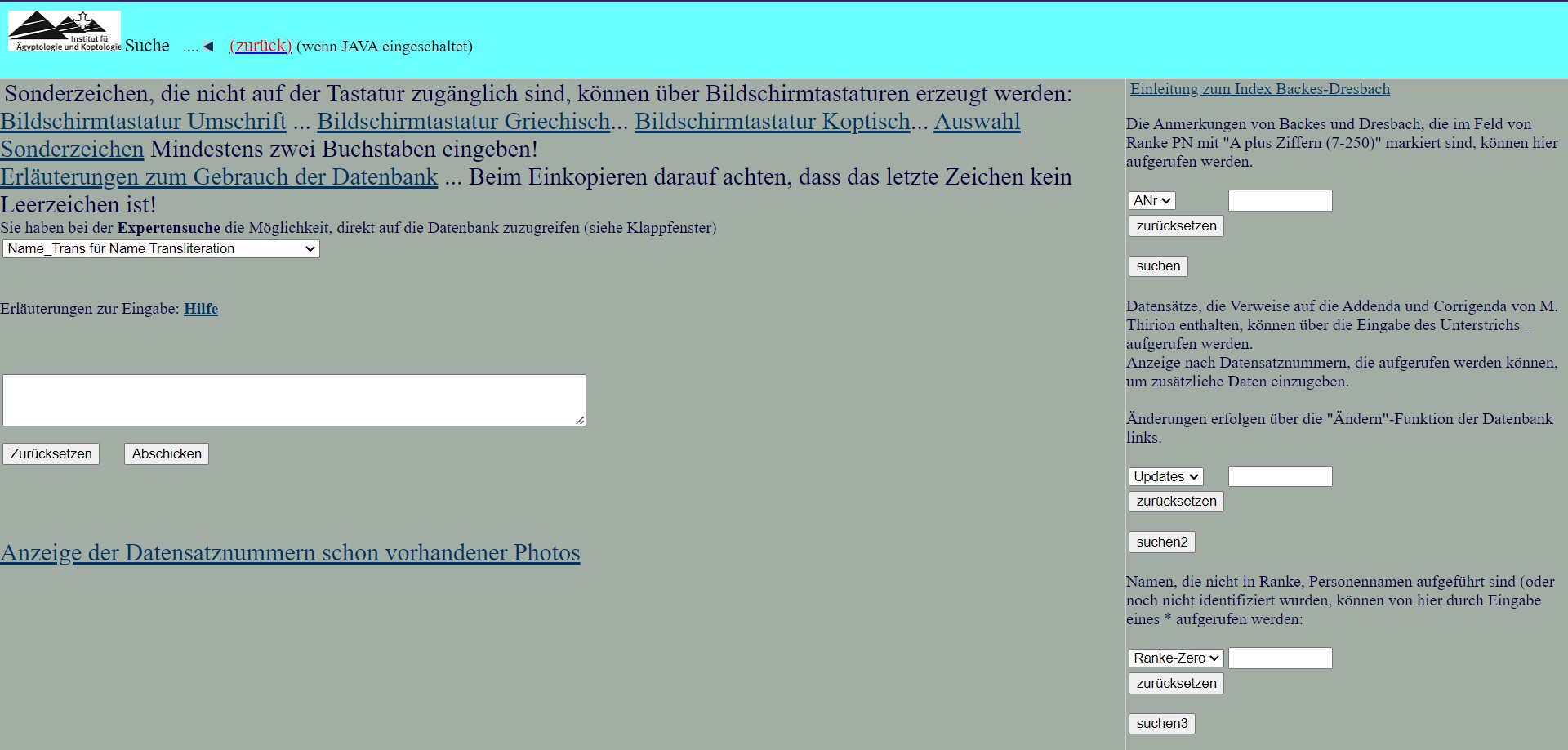
As you can see, you first have to familiarize yourself a little in order to be able to use the differentiated form well. Or do you know the difference between “scharf” and “unscharf”? Let’s take a closer look at the hieroglyphic search! The modification of the codes with leading numbers is important here. Instead of G1, the Gardiner code for 𓄿, you must enter G001. Instead of M17, the Gardiner code for 𓇋, you must enter M017. Hieroglyph searches also take into account the order of the hieroglyphs. This means that searching for “X001-Q003” and “X001*Q003” will return different results! This may be good for positional questions, but a more script-oriented search will have problems here because many entries will not be found.
We asked Professor Graefe if we could include the Prosopographia Aegypti in our metasearch engines. Thankfully, Professor Graefe agreed and also provided us with the data set he uses for his search. Many thanks for this! We converted this data set to Unicode according to our recommendations. Then we added the Prosopographia Aegypti to our metasearch engines. Now you can check if a certain hieroglyphic spelling is used as a personal name. To do this, go to https://oraec.github.io/corpus/search/search_hieroglyphic_word_forms.html and enter the code in the search! You can also check if a certain sequence of hieroglyphs is used in personal names. Go to https://oraec.github.io/corpus/search/search_hieroglyphs.html and enter the code in the search! Have fun searching!
This work is marked with CC0 1.0 Universal